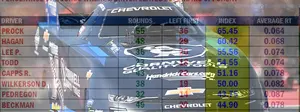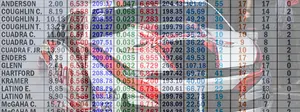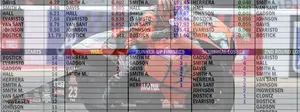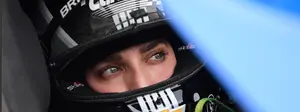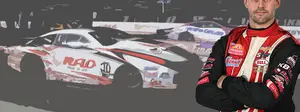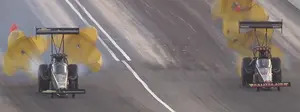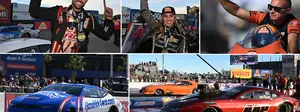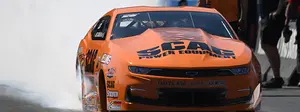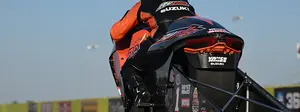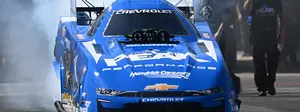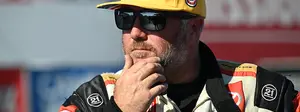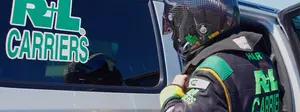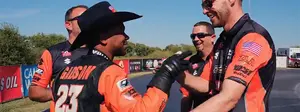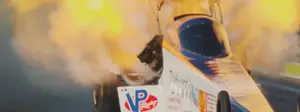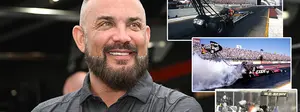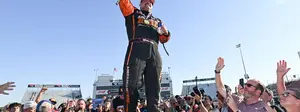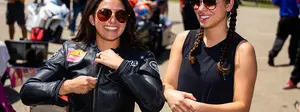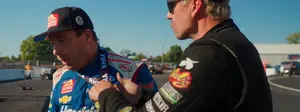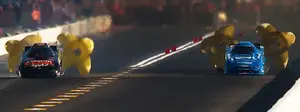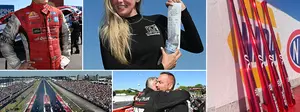

Dom Lagana talks clutch discs, consistency in Top Fuel tuning

Dom Lagana is competing in his sixth Top Fuel event of the 2019 NHRA Mello Yello Drag Racing season and the results have been decidedly mixed. He holds a 4-5 round record, but two of those came in Bristol, his last stop on tour. The wins don’t tell the whole story, though. The Nitro Ninja Top Fuel dragster hasn’t been its usual consistent self in 2019, getting down the track just 53.9 percent of the time it pulls up to the starting line.
There’s more to that story, too.
Lagana, like many part-time teams, doesn’t have the immense clutch-disc inventory of Top Fuel world champion Steve Torrence. That might surprise those who see the Laganas and Torrences as linked entities. Dom’s brother, Bobby Lagana, serves as the assistant crew chief on Torrence’s Top Fuel dragster and they share information, but that only takes you so far. Clutch discs can mean everything in Top Fuel racing.
Lagana ordered a season’s worth of clutch discs (about 60 in his case) so he could best prepare himself for learning their personalities. How long does that take? It depends, said Lagana. If you get lucky, it can be done in a couple of runs. It usually takes longer, though. The two Torrence cars were set up and ready to go after a total of 12 runs – that’s a testament to the cohesiveness of the Capco Contractors team – and a little bit of luck.
It took the Nitro Ninja team a little longer. Lagana left Chicago comfortable despite a first-round loss to Pat Dakin.
“Part of the problem is our first race was in Gainesville and that was a really cool track,” said Lagana. “So, then we go and run a lot of hot races and that data doesn’t really talk to each other that much. We really needed to get a bunch of hot track data before we felt comfortable with it.”
Once Lagana feels comfortable with the car he begins to battle the track. That has been a story since the beginning of drag racing but has become prominent again since the advent of new track prep in NHRA around the SpringNationals in Houston in 2018. It’s always of note when the track temperature creeps above the 130-degree mark, as it has routinely at the NHRA New England Nationals.
“I'll go up there and just look at the track,” said Lagana. “If you're fortunate to be a few pairs behind then you can see some cars run, but that's a hard thing for a part time team. To run at the top of the tier you have to make a lot of changes because the track changes by the minute. We don’t have the data or the knowledge to make top of the tier runs and we're realistic about that.
“We try to run middle of the pack and even then, you can be making changes in the water box with primary ignition and things like that. In one minute, you can go from running a 3.75 to a 3.90, no problem. Slow the clutch timer and take timing out of it. That’s with, even when it’s hot out, you have to have a range. We’ll go out there with one plan, because we can’t look at the track until right before we run, so we might have a 3.75 plan, but we also have another plan in case we see something else happen. But in two minutes we might change it so we can make it run a 3.85.
“If you’re first or second pair you basically leave the pits with a setup and then you go look at the track. That’s your only way of changing it. We usually leave here with a plan and then we also have B and C plans. That’s the cool part is making those last-minute changes – that’s what makes the heroes and the zeroes.
Lagana is looking for a few different things when he heads to the starting line. We always talk about traction, and you’ll see plenty of members of different teams go out with different tools to test traction. Those tools have different names, but the idea is to figure out how much grip is on the track and then decide how much power to apply to the ground.
“You need to figure out where you want to launch because if you have to back it down or not,” said Lagana. “Because the 60-foot is free elapsed time. If you can run an .840 instead of an .860, you’re picking up a couple hundredths of a second. That’s the first thing we’re looking at is the rubber on the starting line, and then we’re looking at the grip at about 100 feet out.”
One thing Lagana can do to battle poor traction is to move the dragster to the left or the right. That becomes particularly important if a dragster in front of Lagana rips rubber off the starting line, which you frequently see when it smokes the tire.
“There are certain tracks that are notorious for having thin rubber, which becomes a problem when a dragster smokes the tire,” said Lagana. “You have to have somebody out there that says we’ve gotta move the car here or there. You can do that at any track but there are some tracks you really have to do it at.”
Lagana continues to chase his first victory while racing at one of his home tracks. You can catch all the action live on NHRA.tv.
























